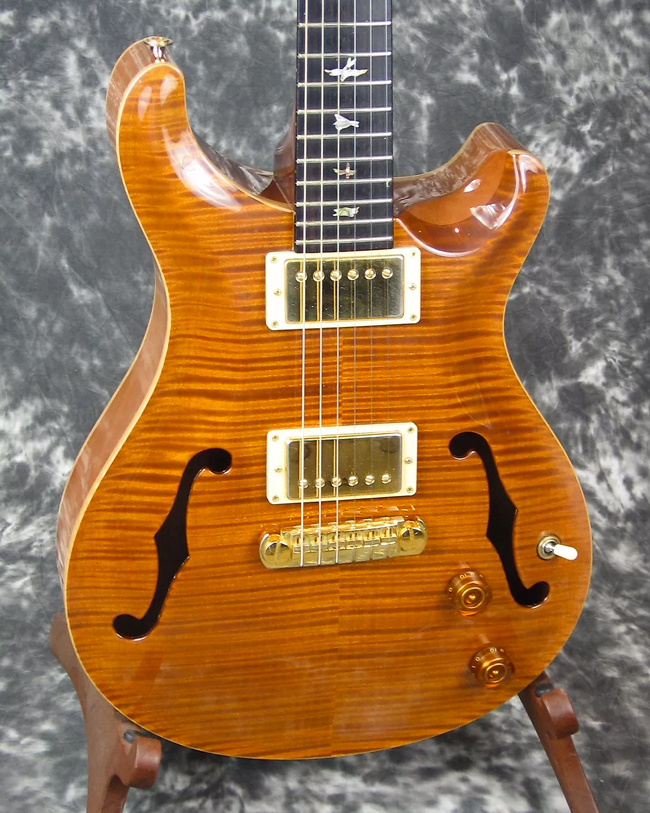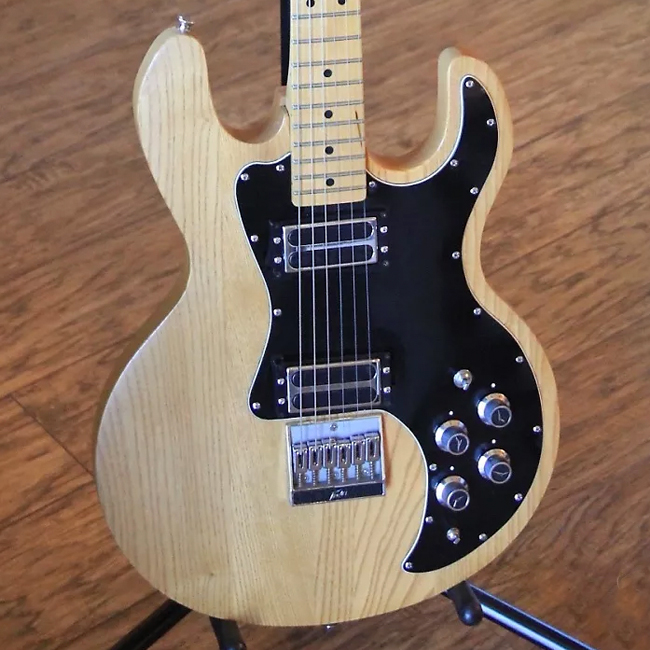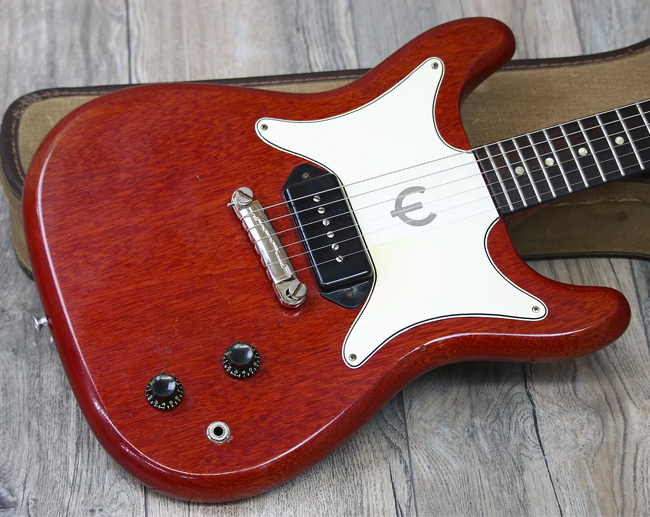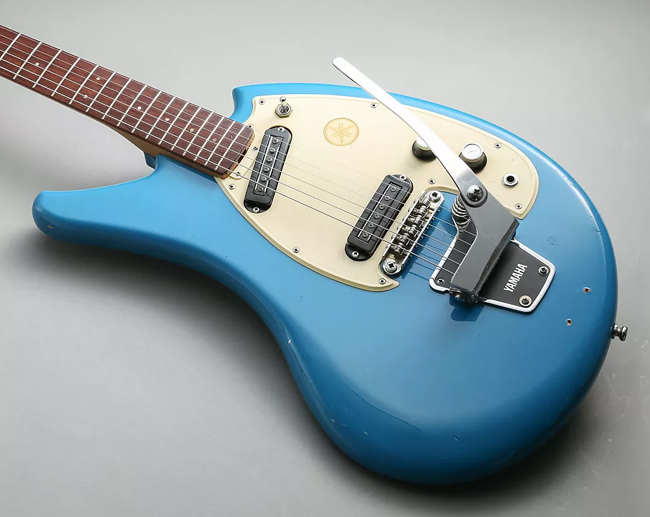Nothing ruins a good thing like a sequel. Where that adage often fails to ring true is in the world of reissue guitars.
Sure, there are players who will only play the original models they loved in the first place. And fine, not every reissue is created equal. But for the most part, players generally love a good reissue guitar—and there have been plenty of quality reissues over the years.
But a number of excellent guitars and no-brainer contenders have still never received a proper reissue for one reason or another.
Last summer, we published "7 Guitars in Need of a Reissue," which featured greats like the Gibson Marauder, Fender Strat Plus and Tele Plus, and the semi-hollowbody Silvertone 1446. In that spirit, we're now back with our own potentially disastrous sequel—or a reissue, if you will. Without further ado, here are seven more guitars in need of a reissue.
Fender Highway 1 Series Strats and Teles
In the age of the American Original stratocaster, there is no guitar in Fender's modern history that deserves a comeback more than the Highway 1 series. For an entire generation of players, this was their first entry-level USA Fender Stratocaster or Telecaster. Throughout their run, these guitars had very distinctive vibes and have become some of the more memorable "new" Strats and Teles that Fender has made in the past three decades.
Introduced in 2002, the Highway 1 series had more mojo and functionality than you could ask for—and it was an affordably priced option for players looking for a USA Fender. These models made an immediate splash on the guitar scene with their vintage-inspired features, comfortable C necks, and simplistic yet beautiful finishes. What is interesting about the Highway 1 finishes in particular is the amount of confusion that exists around them.


A lot of players and sellers assume that the first run of Highway 1s from 2002 to July 2006 were Satin Nitro models because of how easily and naturally they will relic. But the truth of the specs is that these first-run Highway 1s were actually satin poly/acrylic finishes. The satin nitro over poly-finished Highway 1s were not introduced until the second run of '70s/modern-inspired Highway 1s in the fall of 2006.
While there seems to be a more dedicated following for the original run—especially to the staggered-pole Stratocasters from the series—both incarnations were quality USA Fenders, and the Telecasters were just as memorable as the Strats.
Realistically, Fender could bring back the satin poly version that have aged so well and reserve the nitro-over-poly finishes for the American Original series. If they did it true to the originals, they may just accidentally recreate a model that gives their higher-end entries a run for their money.
Fender Lead Series
Another guitar in Fender's history that deserves a revisit is the Fender Lead Series. Introduced in 1979 and gone by '82, the Lead Series quickly became a cult favorite among players. It represents one of the finest USA entries from Fender's Dark Ages. With a smaller, pre-CBS inspired headstock, the design signaled the beginning of Fender's return to the classic headstock from the larger, bullet truss rod-equipped headstock that dominated the '70s CBS era.

Featuring a "Soft-C" neck and 25.5" Stratocaster-sized scale, with a string-through body and a number of unique pickup options, the Lead series proved to be a worthy new budget-friendly model in the pre-Dan Smith/Fender Japan era. The thing that's particularly cool about them, is they don't really sound like a Stratocaster or Telecaster, or many other Fender offerings for that matter. With that said, they still sound very good as instruments on their own and possess a level of tonal clarity and diversity that's truly impressive for such bare-bones instruments. Did I mention that they just look plain cool? Well, they do.
While these guitars weren't exactly a smash hit at the time, they've developed a notable list of famous players over the years, including Eric Clapton and Annie Clark. There's a big enough following of these guitars with modern players that Fender would be well-served to consider a second run of this unique series.
PRS McCarty Archtop Series

Paul Reed Smith's McCarty Archtop series is one of the more interesting and unsung models ever produced by the Maryland-based guitar company. It debuted in 1998 and has been all-but-missing since 2001. These guitars keep with the same classic double-cut shape but sport a significantly deeper body. With that said, they are still significantly less bulky and obtrusive than your run-of-the-mill archtop, and they're notably lighter.
The build quality on these guitars is very high and they are playable to a degree that outstrips most other guitars from PRS. In my own experience, there are few PRS models that have ever made this life-long PRS detractor give the brand a second thought. There are a number of different versions of the McCarty Archtops, including the Artist package models that feature a Piezo-blend for even more tonal possibilities. These guitars are remarkably warm and clear-sounding and nail the tone of a classic archtop. They are also able to handle modern effects and distortion, unlike many archtops that have come before them.
Overall, while the McCarty Archtop didn't seem to set the PRS and guitar world on fire back with its original release, it's more than an excellent guitar and absolutely worth a re-exploration by Paul Reed Smith.
PRS EG Series
Before John Mayer took two-and-a-half years to design his Strat-style Silver Sky, Paul had already beat him to it almost three decades before with the long-discontinued EG series. It's hard to not look at the EGs (specifically the three single-coil-equipped EG-3 models) and not be immediately reminded of the Silver Sky. They are Paul Reed Smith-made, USA Strat-style guitars at their heart. The EGs in their own right are known to be excellent guitars and exist as almost forgotten precursors to the controversial yet celebrated Mayer model.

Introduced in 1990, the EG series featured a number of pickup options (SSS, SSH, HHH, HSH) and alder bodies with maple necks and rosewood fingerboards. While PRS has done a couple other takes on Strat-style guitars since the EG, notably the recently discontinued DC3, the EG was probably the truest to an actual Stratocaster outside of the current Silver Sky. The EGs ended up with a Korean-made SE entry-level version in the early '00s to go along with the USA models that had been previously shelved in 1995.
In light of PRS getting back into the business of making Strat-style guitars, the EG series is worth a revisit. Not every player that wants a Strat-like PRS is necessarily going to want the John Mayer-branded Silver Sky. A resurrection and reworking of the EG series to be the non-Mayer, Strat-style PRS models—in the way that an RG550 is the non-artist sister model to Steve Vai's JEM—might pull in even more Fender players over to Paul Reed Smith.
Peavey T-60
Peavey, the one-time heavyweight American guitar company, presented the T-60 as its debut six-string offering. While Peavey may not be the prominent and beloved company that it used to be, you'd be foolish to dismiss its contribution to the guitar as an instrument and guitar manufacturing. When Peavey set out to make the T-60 in 1976, Hartley Peavey's stated goal was to create instruments that answered "the needs of the working musician" at a "fair and reasonable price."

With the introduction of the T-60, Peavey more than succeeded—establishing themselves as one of the new kids on the block in a crowded late-'70s/early-'80s guitar market. With its streamlined, revolutionary implementation of CNC machines in the production of its guitars, Peavey was able to keep costs down in the building process and focus more on innovative sonic features.
The T-60 at its heart was barebones stylistically—it was not meant to be a "fashion" instrument. Peavey T-60s were purely about about performance and sound. One of the most impressive parts of the T-60 is the electronics and Peavey's proprietary pickups that let you roll the coil and essentially switch from the sound of a single-coil to a humbucker by rolling off the tone from 10 to 7.
To say that the amount of sounds you can get out of a T-60 is impressive would be an understatement, and there is a good reason these guitars have a devoted following. In the spirit of getting in touch with their early golden years, it might be time for Peavey to revisit the T-60.
Epiphone Coronet
Another guitar brand that has a rich yet often overlooked history in guitar is Epiphone. Having been Gibson's international budget brand for the better part of half a century, it is often forgotten that Epiphone was originally a competitor. After being purchased by Gibson in 1958, Epiphone started releasing its own USA-made, Gibson-style models produced from within the Gibson factory. One of these Gibson Kalamazoo-made Epiphone guitars that has achieved a well-deserved reverence among players is the Epiphone Coronet.

Produced from 1958 until 1966, the Coronet was a definitive example of a rocker guitar. Marketed as an entry-level model, the Coronets were lightweight, double-cutaway, 24.25-inch scale Les Paul Jr.-style guitars packed with a P90 in the bridge. Many iconic players have found these guitars to be anything but "entry-level" instruments, including Jimi Hendrix, Johnny Marr, and Kurt Cobain. Throughout their original run, the Coronets were relentlessly stylish and remarkably fast players with one of the best "set it and forget it" tones native to any electric guitar ever.
Even though it seems like a no-brainer for Epiphone to reissue the Coronet in its original form, neither Gibson nor Epiphone has ever released a reissue that actually replicates the original—this, despite two previous revivals of the Coronet name and shape. It should go without saying that a proper single P90-equipped Epiphone Coronet reissue is long overdue.
Yamaha SG-2C/3C
Last and assuredly not least on this list are the '60s Japanese-made Yamaha SG-2C and Yamaha SG-3C models. Easily the most bizarre guitars on this reissue list, the SG-2C/3Cs are known for their intensely unique shape. The shape of these guitars is so odd that they have at times been referred as the "Flying Banana," "Eggplant," or "Earlobe" guitar. At this time in their history, Yamaha was known for unforgettably wacky designs, but the "Flying Banana" takes the award for the most mind-melting shape and eye-poppingly fun finishes. Yet, amazingly enough, these guitars have never been reissued.

Aside from their looks, these guitars sounded fantastic and were known to be more than enjoyable players. In a lot of ways tonally, 2C/3Cs were perfect instruments for the beloved and often-imitated era during which they were produced. Equipped with Yamaha's own in-house single-coil pickups, the 2C/3Cs nail the surf tones of Dick Dale all the way to the rock 'n' roll grittiness of Keith Richards and stringy spaghetti-western sounds.
Overtime, the pickups in these guitars have been known to become increasingly microphonic, like a lot of other pickups from the era. With that said, you won't find too many people complaining about them and period issues like that could be corrected with a reissue. The only real downside of these guitars is that you are best served playing them with a strap because of the shape.
These 2C/3Cs are excellent for what they were, and you'd be hard pressed to find another series of guitars in Yamaha's history that are more retrospectively beloved by fans. C'mon Yamaha, bring back the Flying Banana.
About the Author: Casey Hopkins is a Brooklyn-based writer and songwriter/guitarist for The Advertisers. Aside from writing for Reverb and pursuing music, Casey is a recovering guitar salesman, assembler, and history major. Follow @CaseyHopkinsGuitar on Instagram to keep up with him.
- Synths Pt. I: 6 Synths in Need of a Reissue
- Synths Pt. II: 6 More Synths in Need of a Reissue
- Guitars Pt. I: 7 Guitars in Need of a Reissue
- Guitars Pt. II: 7 More Guitars in Need of a Reissue
- Amps Pt. I: 7 Amps in Need of a Reissue
- Amps Pt. II: 7 More Amps in Need of a Reissue
- Pedals Pt. I: 6 Pedals in Need of a Reissue
- Pedals Pt. II: 5 More Pedals in Need of a Reissue
